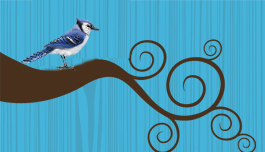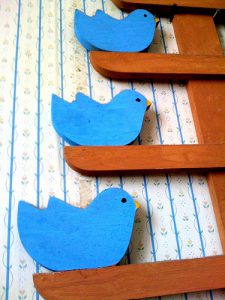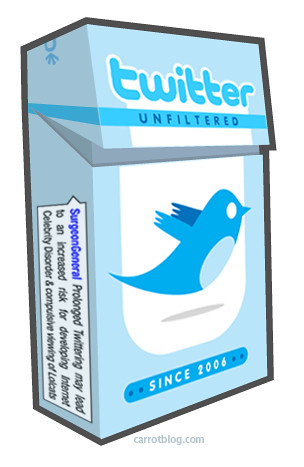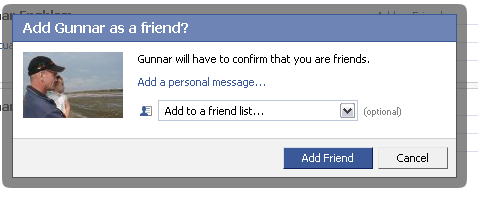This video is on my wall. I lost a Facebook Friend.
If you are still not on Facebook read this Facebook Tutorial first.
Last Sunday after burning midnight oil and already Monday 1 AM, and all prude should have been in bed a long time, I posted this link to a funny commercial on my Facebook profile. Result: I lost a follower, who wrote me and said it was disgusting, and consequently de-friended me. Not only that, she will use the competition when eventually coming to Peru birding. Did I do wrong? Did she over-react? I think it comes down to how we use Facebook differently. I should not be surprised, because I have invited birders from all over to become Facebook friends with me. If you are a birder and we share some Facebook friends you may already have received a Facebook friend request from me. I believe that building a birder’s network on Facebook is generally a good thing. It could become like a giant Birdingpal network. A tremendous resource if you plan a birding trip somewhere. You get an insight what birders are up to, even if it is not exactly birding all the time, but I like that as well, because it makes each and everyone even more interesting. I have an open mind and I am not easily offended. I will speak my own mind on my Facebook profile, but I am usually careful to disclose if a link contains explicit language. The few self-inflicted rules I play try to play by are the following:
- No explicit language from myself. I may link to explicit language (remember I like Punk and Hip-Hop) with a disclaimer.
- No negative thoughts. Why bother friends with my sorrows?
- No Facebook or Twitter when drunk! (Rarely nowadays, but it is a good rule I hope I remember if I get really pissed)
- No compromising pictures of myself or others. (That is actually a general Facebook rule. You may get sued if you post something compromising.)
But still, there may be things that don’t match with all birders, so I am really not surprised to lose a Facebook friend by posting a sexist commercial on my wall. As I indicated in my Facebook mail to “Sawwhets’s New”, it may be better for some users, only to let your closest become Friends and connect with other birders through groups and fan-pages. This post is meant to guide you through the differences between Profile, Page and Group on Facebook.
Facebook Profile
This is the first step. You automatically get a profile when you open your Facebook account. This account SHOULD be in your own name. Profile is for individuals. Real people and with their real names. You are not allowed to use pseudonyms or your company names. (Watch out, Sawwhet! You may lose your account!!). Originally, Facebook meant this space to be completely private. That is, something you only share with those that you are close friends with. But with the expansion of Twitter, more and more people are quite lenient in whom they share “friendship” with. And Facebook does not seem to mind too much. You get suggestions by Facebook whom to connect with often indicated by how many friends you have in common. As mentioned above, many birders like myself have found it an extremely useful network builder connecting with other birders through Facebook. It is more engaging than groups and most pages (more on these topics below). Let’s take a look on some features in Profile.
Home
Although, most Facebook users are navel gazers, looking only at their own wall, the most interesting feature of Facebook is the more Twitterlike Home News Feed where the stream of updates from your friends is showing. It is here you make discoveries – like a great link you may want to share with your other friends. It is here you interact with your friends – Make a comment! It is here you lay the foundation to become a great person on Facebook. You don’t want to become one of the 12 most annoying types of facebookers, do you? (I am sure at times I have been perceived as all 12 of these at the same time…but one learns, right?…Still a “friend padder”, though. I admit!!)
In my News Feed there are hardly any apps for quizzes, games, mafia wars, etc, because the moment I see them I hide the application (pass the cursor over the upper right corner of the annoying app feed to hide it). I simply don’t have time for those games.
But there is more cool stuff on Home. You can for instance group your Friends in lists and only get the feed from a particular list to show. See how I have made my lists here to the left. You may have a list for birders, one for family, one for close friends, one for past friends, one for people who share things you enjoy, etc. Click Friends in the bar to make your lists. When you have created all the lists you want, come back to the Home page and click More in the side column to visualize all lists. When all lists are visualized you can sort them as you wish (in the More mode) and put you favorite list on top. That way, next time you open your Facebook you shall find updates only of your favorite friends to start with. (Hint, hint Sawwhet!).
Also on Home in the right column, you find the suggestions of people to befriend. Make sure people you ask to become your friends really share your hobby. If you have many friends in common who happen to all be birders it should be safe to ask to become firends. Also, always send an introductory message with the friend request. The maximum number of friends any one person is allowed to have is 5000, although you can only send a message to 20 friends per delivery.
Additionally on the Home page are highlight of links and photos shared by your friends, an events calendar and a list of upcoming birthdays.
Profile – it is all about me!
All your activity will show here. Anyone looking at your page will expect to see lots of stuff about you on the Profile Wall. But still, be somewhat careful. Be sure you share stuff that is not always about yourself. Share some videos, or music that you like, bird photographs, and links. The links can and should be your blogposts, but you will become a hero if you also share blog posts of blogging friends and other cool stuff that you find on the net that your friends will enjoy. If you are using the many apps of games and quizzes on Facebook they will also show here, and your friends that do not participate in the games can not opt out not seeing these when they come by for a visit. If these friends reacts as I do, when I see a page full of apps, they will leave quickly!
Groups
Anyone can start a group. I am sure you already belong to some groups. I have started three groups. Groups are communities centered around a subject that you have in common with many others
- Pelagics. Seabirds birding worldwide 965 members
- Whalewatching. Whale-watching worldwide. 684 members
- The Real Birding Peru 119 members
On these spaces members can upload pictures and links. In fact the photo galleries is the strongest feature. In spite of relatively high member numbers in these groups they lead a quite quiet existance. Very few comments, few discussions. I think one problem is that group activity does not show in the News Feed. If it did there would be more activity. There may be a way to activate this, but I still have not found it. Please advise if you know how.
UPDATE: Recently Facebook gave groups a new layout. The first group page is now more wall like and very inviting for leaving comments. Both discussion topics and Photos are posted on the wall as well as comments in general or links. This is great news and have kicked life into many dormant groups.
As a group owner I can send out direct facebook notifications to the group members. One of the most common reasons why people leave groups is abusive use of administrator mailings. As admin/group owner, don’t use this feature more than once or twice per month. People will be less annoyed. There is no limit in how many members a group can have. I am sure some people have thought that you could create a group called something like ” I bet I can find 1 000 000 people who want to save the rain forest”…and then send them all invitations to “help” an NGO that the same administrator runs. Well, you can’t, 5000 people is the maximum you can direct updates to. (Sorry spammers!!). Large organizations that aspire more than 5000 members should looks at Pages rather than groups (see below).
The strongest feature apart from photos (and the new wall) is the events calendar, which gives incentive to interaction. As group owner you can create an event that mobilize people to become more active in the group. Every member will receive the event invitation. More tips on how to reviving a dormant Facebook group can be found in the excellent summery 5 ways of reviving a fading Facebook group by Rebecca Leaman on John Haydon’s blog.
Facebook Pages.
Also known as Fan Pages. This is the place for your company, your pseudonym or personal name if you are a famous birder, singer, actress, hip-hop artist or just a big Social Media guru. You can only make a page with a brand you own or have the rights to use. The Page function is very much like the profile. You can make status updates and send links on the Page Wall, just as on your profile with these showing in the Newsfeed to your fans. This makes it easier for your fans to detect your activity and they will interact. Facebook pages can be a bit difficult to find, because they don’t show on your profile very prominently. There are advertsing options for companies and such efforts can be very powerful as the advertising on Facebook is very targeted. The cheapest way to get fans to your Page is to first get Facebook Friends to your profile and then invite them to the Fan Page of your brand, band or whatever. If your profile or group really is your brand, there are also possibilities to change them into a Page and take your friends with you. Contact Facebook from the help page. I post news about our trips on the Kolibri Expeditions – Birding Peru Page. Blogposts about Social Media and most family stuff go to my Facebook profile only and birding posts go to both the Fanpage and my profile. A good link about Profile, Pages and Groups on Facebook is provided by John Haydon. He also gives many other good links on the subject.
The most important one single feature of Facebook Pages is that they are open to view by all public (No need to be Facebook member to see it) and thus indexed by search engines. Anyone caring about Search Engine Optimization (SEO) for your main webpage and your brand, knows that this is extremely important.
End note.
Facebook, thus gives 3 different ways to interact. There should not be any problems to connect with people you don’t want to share your details with. You may get repetitive friend requests from people you share the same interest with whom you may want to be connected with regarding birds, but not share other stuff. From the above you have learnt that you can either accept and just adjust your privacy and list settings or delete the friend request and connect in groups or on pages.
Want to learn more? Sign up for the RSS stream of this blog, our biweekly newsletter (see sign-up box in the side column) and/or the groups and pages linked to above. And if you haven’t yet joined Facebook: What are you waiting for?










